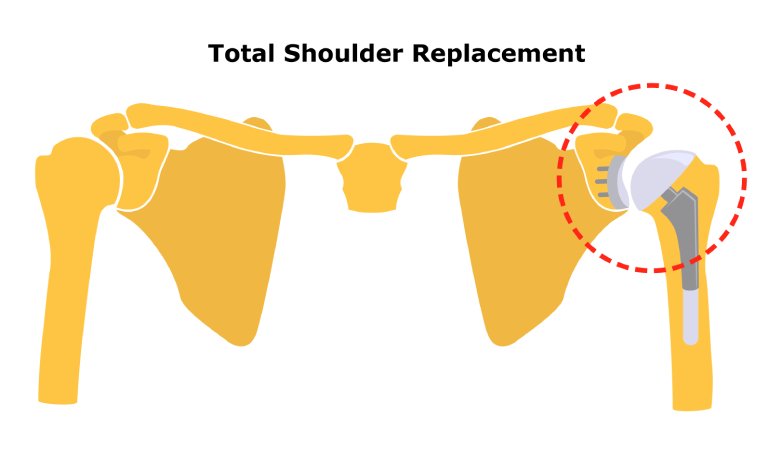Shoulder Replacement
When shoulder pain and restricted movement keep people from enjoying life, Dr. Sean Gallagher can help. At his practice, ATX Orthopedics in Austin, Texas, patients can find relief with a shoulder replacement. We are located in Central Austin.
Shoulder Replacement Q&A
What is a shoulder replacement?
When the ends of bones are damaged at the joint, joint replacement surgery is used to provide a new gliding or rotating surface by creating a new joint surface. In shoulder replacement surgery, the ends of the upper arm bones and usually the shoulder bone will be replaced or capped with artificial surfaces lined with plastic or metal. Shoulder joint components can be made with a material which allows new bone tissues to grow into the joint gradually or can be held in place with cement. The surgeon will typically replace the uppermost portion of the upper arm bone with a long metal device. This is inserted into the bone and has a rounded head to fit into the socket. If the cup-shaped surface of the shoulder which holds the upper arm bone, or socket, is also damaged, the surgeon will first smooth it and place a cap made of plastic or metal over the top of it.
Why is the procedure performed?
When shoulder pain and loss of function and mobility is especially serious and when medications or additional therapies are not relieving the pain, the doctor will likely recommend shoulder replacement surgery. The doctor will perform X-rays to view the bones and cartilage to identify whether they are damaged, if there is a fracture, or any other possible issues which could make surgery a poor choice.
What is recovery should replacement recovery like?
For the next 24 hours, intravenous (IV) antibiotics will be provided. Patients will also receive medications to lessen pain and, in some cases, medications which stop blood clots. Patients will be bandaged around the shoulder and a drain to gather fluid and keep it from accumulating will likely be present. Patients will probably also have a catheter, or a small tube connected to the bladder. A compression sleeve on the arm may also be used as well. A physical therapist can begin gentle exercises on the same day or the day after. These exercises will be passive where patients relax and the therapist moves the arm for them.

